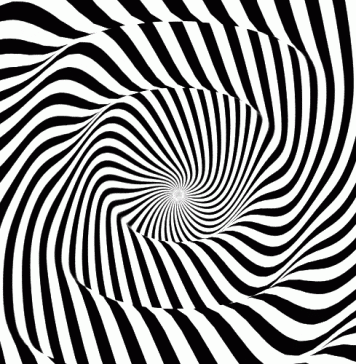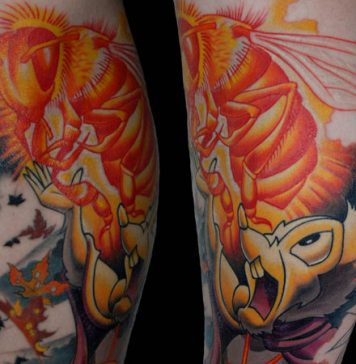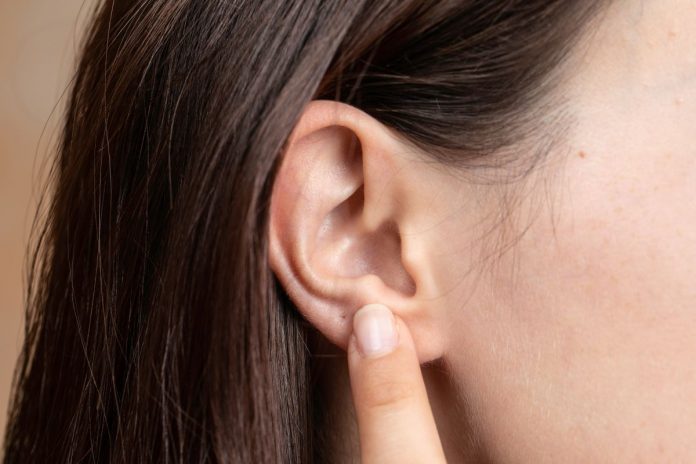
Pain isn’t the only thing you have to consider when getting body piercings. At times, the process comes with negative effects – just like keloids.
Keloids rarely go away on their own. In most cases, they continue to grow for months or for some years.
Although keloids are rarely harmful, they could be a physical annoyance that you just don’t want around. So if you’re bothered about the keloids on your piercings and want to get rid of them, you should keep reading.
Quick Navigation
- What Causes Keloids on Piercings?
- How to Avoid Keloids on Ear Piercing
- Do Ear Keloids Go Away on Their Own?
- Can You Pop an Ear Keloid?
- How Do I Get Rid of a Piercing Keloid?
- Home Remedies to Get Rid of Keloids
- Concluding Thoughts
What Causes Keloids on Piercings?

Keloids on piercings are caused by the injury or piercing itself. Technically, a piercing is an open wound. As the piercing heals, the fibrous scar tissue replaces the old tissue.
For some people, especially those who are keloid formers, the body produces too much scar tissue. For some, this may result in hypertrophic scars.
These extra tissues then spread out from the piercing, causing that bump, which we all know are keloids or what others call as piercing bumps. A keloid is considered as an abnormal wound healing.
For some, it may not be noticeable at first. Keloids may take several months, sometimes years, to be noticeable.
So if you notice a lumpy scar on the pierced area, that’s most likely a keloid or a piercing bump. Keloid scarring may also occur for nose, philtrum piercings or any other body piercings, not ear piercings alone.
In rare cases, tattoos may cause keloids as well. It won’t cause any damage, but it can be annoying to look at.
How to Avoid Keloids on Ear Piercing
If you want your ears pierced and are afraid to develop keloids, then you should know that there’s no surefire way to avoid them. The best thing to avoid piercing bumps is not to have your ear pierced at all.
But if you want to have your ears pierced, or have a body piercing, then you have to pay close attention to the piercing site. Check your piercing every day for a raised scar or if your ear lobe starts to thicken. The keloid may start to develop, so you need to act quickly.
What you should do is remove the earrings immediately and start wearing a pressure earring. Pressure earrings put pressure on the earlobe and the surrounding skin to stop the piercing bump from growing any bigger.
Do Ear Keloids Go Away on Their Own?
Keloid scars on ears rarely go away on their own. In rare cases, keloid scars may disappear over time, even without treatment. A keloid and an infected piercing may co-occur, and this is something you must address immediately. Fortunately, there are treatment options that can help with removing a keloid scar.
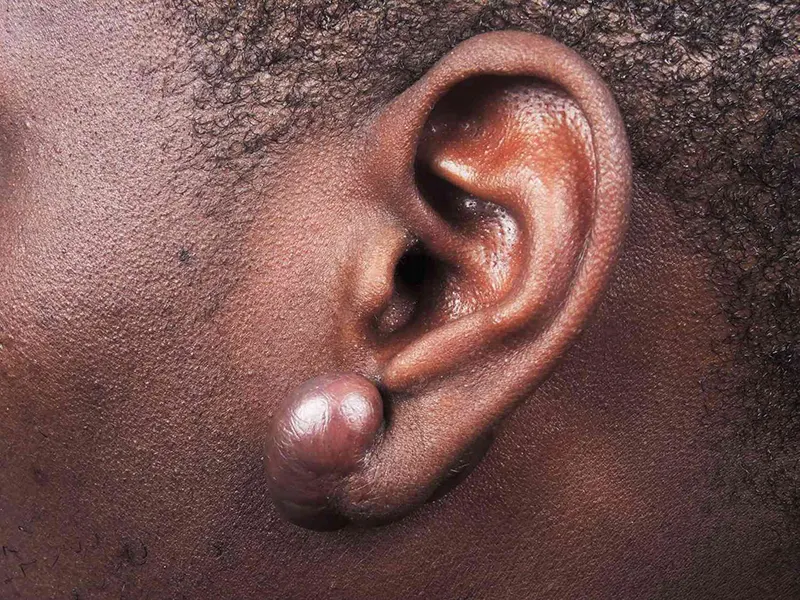
There are home remedies you can try, or you can opt for medical treatment from a healthcare professional. However, home remedies may not be an ineffective treatment. Also, even after medical intervention, there’s the chance that the keloid formation may grow back.
Can You Pop an Ear Keloid?
No! You cannot pop an ear keloid. For the record, an ear keloid is a type of scar tissue. Keloids do not contain pus for you to pop it like a pimple. Popping an ear keloid can cause scarring and further skin damage, which may lead to an infected piercing.
How Do I Get Rid of a Piercing Keloid?
If you want to get rid of a piercing keloid, it is best to talk to a medical professional right away. It is best for a medical professional to confirm and diagnose the presence of the keloid rather than jumping into home remedies, which are most likely ineffective.
Once your doctor confirms the presence of keloid scars, treatment may be prescribed. The next part of this post will discuss the treatment and interventions to get rid of keloids.
It is important to remember that these treatments are not just for keloids caused by piercings alone, but for all keloids in general, regardless of the nature of the cause.
Topical Medication
There are two types of topical medication that are likely to be prescribed for a keloid scar — corticosteroids and topical silicone gel. Corticosteroids are applied to help reduce the inflammation, irritation, and tissue damage from the piercing.
Depending on the severity of the keloid, if a topical application may not be enough, the doctor may inject corticosteroids into the keloid. It’s usually an outpatient procedure.
Corticosteroid injections are scheduled every four to six weeks. Some doctors may recommend up to four injections, sometimes more.
In conjunction with topical or injectable corticosteroids, topical silicone gel may be prescribed as well. As mentioned earlier, keloids form due to excess tissue formation caused by the piercing. A silicone gel addresses this issue.
A topical silicone is applied to the piercing site to regulate collage production and inhibit the overgrowth of scar tissue.
Laser Treatment

Thanks to the advances in the beauty industry, laser treatments are now available to shrink keloids. Pulsed-dye laser treatment in particular may be recommended by your doctor to flatten the raised scars.
Pulsed-eye laser treatment is delivered in several sessions at a 4 to 8 weeks intervals. Most dermatologists would recommend laser treatment in conjunction with corticosteroid injections for faster healing.
Scar Freezing
Another nonsurgical intervention to remove keloids is through scar freezing or Cryotherapy. In this procedure, the keloid is exposed to extreme cold, where liquid nitrogen is used. Extreme cold from the liquid nitrogen causes the keloid to swell, then ooze a yellow blood-tinged fluid.
Several days after the treatment, the keloid will dry out, the keloid shrinks in size, and eventually be fully removed. Cryotherapy is one of the most proven effective ways for keloids to shrink, but it may be uncomfortable for some.
Also, Cryotherapy is not a one-time session. Several sessions may be recommended to achieve normal-looking skin.
Surgical Removal
If you want an instant remedy to remove keloids, then surgical removal is the best option. You may ask, is this an outpatient or inpatient procedure?
Well, it depends on the size of the keloid. For small keloids, it can be done in an outpatient setting using local anesthesia. The doctor will use a surgical knife to remove the small keloids.
For larger keloids, it is best for a dermatologist to work on this. The surgical removal of large keloids is done in an operating room, wherein general anesthesia will be given during the procedure.
In some cases, skin grafting will be performed. Surgical removal of keloids is also recommended if nonsurgical options like laser and steroid injections are not responsive.
Radiation Therapy
After successful surgical removal of the keloid, your doctor may recommend Radiation Therapy. As mentioned, keloids have the tendency to grow back even after treatment, even after surgical removal.
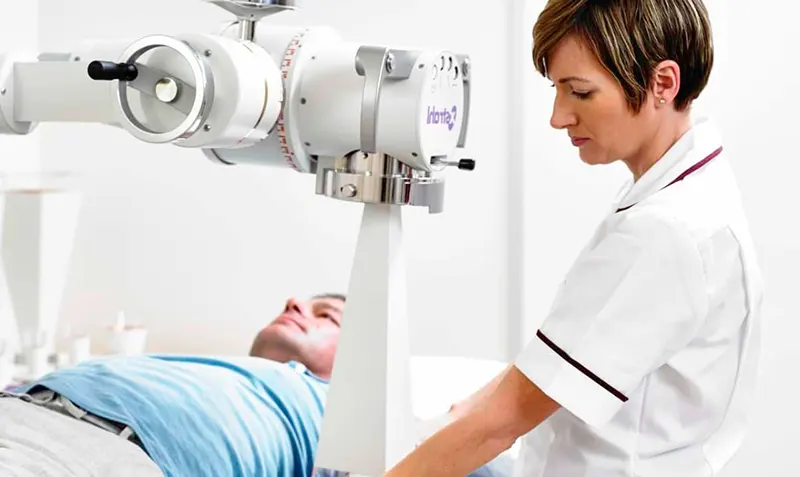
To avoid the keloids from growing back, Radiation Therapy may be recommended by your doctor.
During radiation therapy, keloids are exposed to strong radiation beams. Several sessions may be recommended to ensure that the keloid does not grow back.
Home Remedies to Get Rid of Keloids
When you notice keloid formation, it is recommended to see a medical professional right away. However, if seeing a doctor is not in your cards at the moment, there are home remedies you can try.
Aspirin
A study conducted in 2015 suggests that topical use of crushed aspirin tablets can help treat keloid by reducing the size and pigmentation. Here’s what needs to be done:
- Crush three to four aspirin tablets.
- Mix the crushed aspirin in water to form a paste.
- Apply the paste to the keloid and let it sit for at least one hour.
- Do this once every day until the keloid starts to reduce in size and pigmentation.
Garlic
Garlic has a similar mechanism of action of aspirin. Simply take three garlic cloves and crush them. Apply the crushed garlic to the keloid area and let it sit for 15 minutes.
After 15 minutes, wash it off with water and apply Vaseline or moisturizer. If in case your ears would react badly to the garlic, wash it off immediately and discontinue the use.
Honey
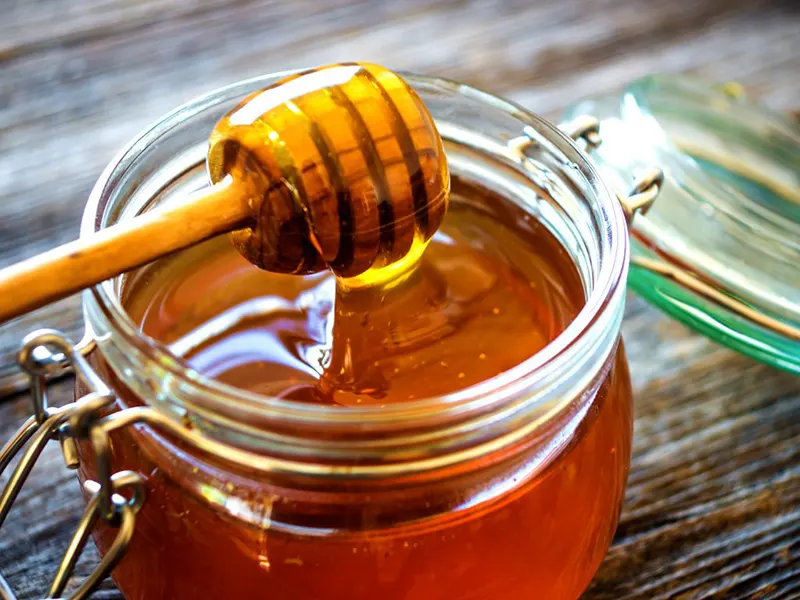
Honey has anti-inflammatory effects that help reduce keloids. In short, honey acts like steroids and aspirin combined in one.
For this home remedy, apply organic honey on the keloid area and let it sit for a while. wash it off after 15 minutes and repeat the process two to three times a day.
Concluding Thoughts
To sum it all up, keloids caused by piercings are scar tissues that rarely go away. Treatment, may it be a home remedy, nonsurgical or surgical intervention can help treat keloids.
In case you plan on having a piercing, monitor it closely and intervene right away if you notice keloid formation.
If you already have a keloid caused by a piercing and want to get rid of it, talk to a doctor right away. Early detection and intervention will prevent the keloid from getting any bigger, darker, and undeniably annoying.



